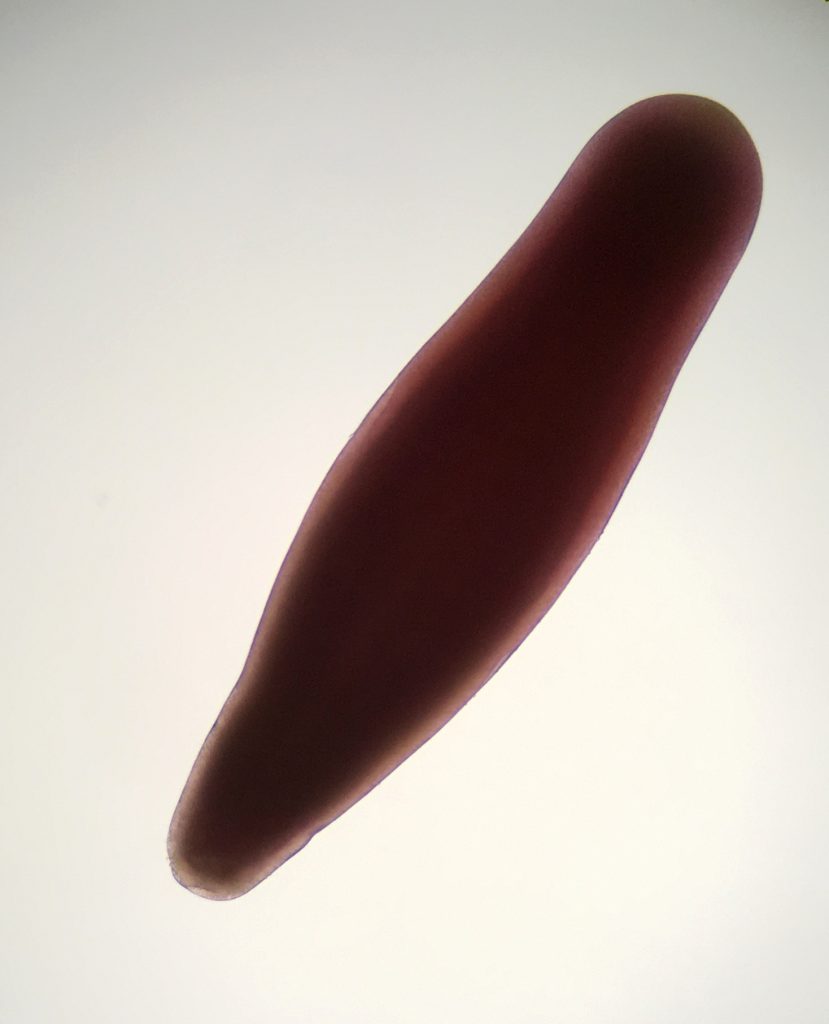I’m willing to bet that when you think about coral, what comes to mind is something like this:

© 2004 Richard Ling
The reef-building corals of the tropics are indeed spectacular structures, incredibly rich in biodiversity and worthy of a visit if you ever get the chance. These coral colonies come in many shapes, as you can see in the photo above. Each colony consists of hundreds or thousands of tiny polyps, all connected by a shared gastrovascular cavity, or gut. The living polyps secrete a skeleton of CaCO3, which grows slowly over decades or even millennia as successive generations of polyps live their lives and then die. It’s this slow accumulation of CaCO3 that makes up the physical structure of the reef.
Reef-building corals are members of the Scleractinia, the so-called stony corals. The stoniness refers to the calcareous skeleton that they all have. But not all corals live in the tropics. We actually have two species of stony corals in Northern California. The brown cup coral, Paracyathus stearnsi, lives subtidally, and I think I’ve seen maybe a handful in all my intertidal explorations. The orange cup coral, Balanophyllia elegans, extends up into the low intertidal, and can be very common at certain sites I visit regularly. When I see them at low tide they are emersed and look like orange blobs. But if you touch one with your finger, you can feel the hardness of the calcareous base.
Stony corals they may be, but Paracyathus and Balanophyllia are both solitary; that is, they aren’t colonial. Each polyp developed from its own larva and lives its own life independent from all other corals. Its bright orange color makes Balanophyllia pretty conspicuous, even though most of them are less than 10 mm in diameter. They do occur in patches, which makes one wonder. If they’re solitary rather than clonal or colonial, how do these patches arise?
To answer this question we need to venture into the lab and examine the biology of Balanophyllia more closely. Fortunately, they grow in the lab quite happily. Years ago my friend Cris collected a bunch of Balanophyllia and glued them to small tiles so they could be moved around and managed in the lab. Cris has since moved on to other things, but the corals remain in the lab to be studied. They are beautiful animals, and can’t really be appreciated in the intertidal because at low tide they’re all closed up. But look at how pretty they are when they’re relaxed and open:

2020-05-01
© Allison J. Gong
Like all cnidarian polyps, these corals have long tentacles loaded with stinging cells, or cnidocytes. See the little bumps on the otherwise translucent tentacles? Those are nematocyst batteries, clusters of stinging cells.

2020-05-01
© Allison J. Gong
Let’s get back to the biology of this beast and how it is that they seem to live in groups. Balanophyllia is a solitary coral with separate sexes–each polyp is either male or female. They are also brooders. Males release sperm, which are ingested by a nearby female. The female broods fertilized eggs in her gastrovascular cavity. After a long period, perhaps several months, a large reddish planula larva oozes out of the mother’s mouth and crawls around for a while, generally settling and metamorphosing near its parent.

29 April 2020
© Allison J. Gong
This planula is a very squishy elongate blob, and can measure anywhere from 1-4 mm in length. It is an opaque red color, has a ciliated epidermis, and lacks a mouth or digestive system. Instead of feeding, it survives on energy reserves that its mother partitioned in the egg. You might surmise that not being able to eat would necessitate a quick metamorphosis into a form that has a mouth, but you’d be wrong. While some of them do indeed settle and metamorphose very close to their parent, others crawl around for several weeks, showing no inclination to put down roots and take on life as a sessile polyp. Perhaps they can take up enough dissolved organic matter from the seawater to sustain them through a long period of fasting.
At some point, though, the larva settles and metamorphoses into a little polyp. In the lab at least, Balanophyllia larvae settle on a variety of surfaces–glass, various plastics, even the fiberglass of the seawater tables.

2020-04-29
© Allison J. Gong
The little coral measures about 2 mm in diameter and has 12 tentacles. It feeds very happily on brine shrimp nauplii and should grow quickly. Those three larvae, though, may hang around forever. I got tired of waiting for them to do something and released them into the seawater system. It might or might not have been an accident.
So there we have it. Our local cold-water coral, which doesn’t form reefs or live in colonies. Balanophyllia may seem atypical for corals, but what it really demonstrates is the diversity within the Scleractinia. It reminds us that generalities do indeed have some value, and that for the discerning mind it is the exceptions to the generalities that are most interesting.



Great article! You can see lots of these B. elegans at low tide at the Fitzgerald Marine Reserve. Ask a naturalist if you can’t find them.
Good synopsis of my critter Alison! There is a third temperate coral in the Northern California subtidal, Astrangia lajollaensis. It is a clonal species in that it buds new polyps, but as far as I know, they do not share resources like colonial reef corals. They also don’t create large reefs structures like in the tropics.
Subtidal, meh! If it doesn’t live in tide pools I don’t get to see it!
Hey, there is a lot of fun stuff down there! I seem to recall you working on a beastie with subtidal AND pelagic life stages… 🧐